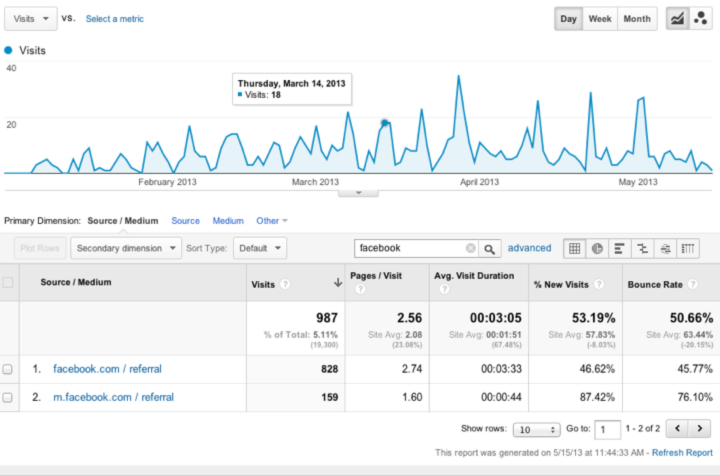Goals without measurable metrics attached to them aren’t really worth much. Likewise, setting goals without intending to check back in to see how you’re doing probably ends up feeling like a waste of time.
From the get-go, you should be conceiving of goal-setting as a giant feedback loop:

Once we have goals that are specific, measurable and time-oriented (click here for more on that), we can think about what kind of data will be relevant to checking in on our progress.
How do we track?
Each aspect of our campaign or project has a data set associated with it.
Email
Virtually every email blast service tracks a standard set of metrics for every email you send. (And if your email blast service doesn’t, it’s not worth using.) The standard metrics are:
- Open Rate
This is the most basic measure of the success of an email blast, but don’t give it too much weight. For one thing, it’s a fuzzy number to measure because email blast services can’t really tell you exactly how many people read your email. Instead, they use a proxy in the form of a little invisible pixel embedded in every email. Every time that pixel is downloaded from their server, it counts as one open. So if someone has images blocked (as many – if not most – people do) it would depress the actual open rate; likewise if someone’s email program automatically downloads images when they load their email, irrespective of weather or not they actually read it, it could artificially inflate the rates.It’s also much less relevant to know how any unique email performs compared to some abstract number (what does 35% open rate mean? Is that good or bad?), and much more important to track how your rates change relative to each other. Every email list is a little different, so there may not really be a standard, across-the-board “good” open rate…but if your lists’ average is 13%, and an email gets 6%, it’s worth trying to find out why.A few under-performing emails, as measured by a simple open-rate metric, often don’t tell the whole story — appeal kickers that have lower open rates might be the biggest money earners, for instance. - Click-through Rate (CTR)
CTR is in some ways a much better measure of the success of any email. Unlike with Open Rates, CTR is an accurate count of how many people not only read your email, but were also inspired enough to take the additional step of spending additional seconds clicking through. It may not result in the actions or donation totals you were hoping for, but in a world where time and email inbox space are at a premium, a relatively high CTR counts as a pretty ringing endorsement of your email’s subject line and content. - Unsubscribe Rate
Sending too many emails a month? Not enough? Confusing people with misleading subject lines or appeals they weren’t expecting? Unsubscribe rates are an important way for us to realize that we’re doing something wrong. As with Open Rates, the overall average is worth less attention than a major spike or drop off. - Bounce Rate
This is what tells us how many bad email addresses we have on our lists. It shouldn’t jump or drop unexpectedly, but it’s worth paying attention to. Lists with high bounce rates tend to get flagged by email service providers as likely spam, meaning your email is more likely to end up in someone’s junk folder, where it’s not doing anyone any good.
Web Sites
Google Analytics is the gold standard of web site analytics tools, and has the added benefit of being the free-ist. The interface is intuitive and actually kind of fun to play with, but the amount of data presented can be overwhelming. Whatever analytics tool you’re using to measure the effectiveness of your web site, here are the key metrics to take ongoing note of:
- Overall site views
Much like “Open Rates”, this is a metric best utilized in relative, not absolute, terms. A big spike or drop in traffic is a flag worth investigating; likewise a long, slow increase or decrease in hits. - Unique Visitors
This stat lets you know how many people are viewing your site for the first time, and how many are coming back time and again. Both are useful, and depend ultimately on what your goals are (new email signups? New visitors can measure success. Long-term education? Return visitors can indicate a sense that your content is valuable and worth returning to). - Bounce Rate
This indicates how many people leave your site after they’ve landed there. Lower is better, and tracking which particular pages inspire further exploring or taking wing to greener internet pastures is probably the best use of this particular stat.
Social Media
Social media can be harder to track, because often the goal is the difficult-to-quantify “interactions” or “relationships.” That said, there are a number of worthwhile tools we can use to measure the relative effectiveness of certain types of interactions.
- Using Traffic Sources in Google Analytics, we can track how much of our web site traffic comes in from social media sources like Twitter, YouTube, and Facebook. You can also use analytics to see what content is coming in from mobile browsers.
- Set up Google Alerts to track key words on the issue/campaign you’re working on – Google Alerts grab from Twitter and blogs, easy content to track (or share or otherwise interact with).
- Facebook insights provide extremely granular data on all different types of interactions with your content over a wide range of dates. It’s hard to manage using the Facebook interface, so your best bet is to download. Even then there’s an overwhelming amount of data, so simply delete almost all of the columns, leaving just a few key metrics behind:
- Weekly People Talking About This (Page Level – Key Metrics – Column C)
This is the number of people sharing stories about your page, including: liking your Page, posting to your Page’s Wall, liking, commenting on or sharing one of your Page posts, answering a Question you posted, RSVPing to one of your events, mentioning your Page, phototagging your Page or checking in at your Place. (Unique Users). - Weekly Total Reach (Page Level – Key Metrics – Column P)
The number of people who have seen any content associated with your Page. (Unique Users) - Lifetime Post Viral Reach (Post Level – Key Metrics – Column H)
The number of unique people who have created a story from your Page Post as a percentage of the number of unique people who’ve seen it. This is a good way to test how shareable your content is. This metric is an indicator of how likely your fans are to share your posts. - Lifetime Post Engaged Users (Post Level – Key Metrics – Column M)
The number of people who clicked anywhere in your posts. (Unique Users). Another way to parse engagement, this shows how many people are interacting with specific content – liking, sharing, viewing videos or photos, commenting, etc.
- Weekly People Talking About This (Page Level – Key Metrics – Column C)
- Twitter
With Twitter, you can do weekly check ins to manually count followers—we recommend keeping a spreadsheet to a tally once a week.- Keep in mind that the raw number of followers is pretty rough – lots of people follow and then just tune out
- Much more effective to track if you’re actually getting RTs and mentions
- Track what works and when in the spreadsheet.
- Take a look at Klout: It’s free – just plug your Twitter handle in and it’ll tell you your score. It calculates your reach, influence, the important networks you’re a part of, issues on which you have more influence, and which of your followers are high ranking network hubs.
- Use 3rd party apps to track data and trends. Tools like TweetDeck, HootSuite, and Seesmic are useful for scheduling posts and creating regular searches, but their biggest benefit is in tracking and analyzing Twitter account performance.
The bottom line:
Having goals isn’t enough—you also need to track your successes and failures. You should:
- MONITOR: Using stat-tracking tools available in Facebook, 3rd party Twitter apps, Google Analytics and alerts.
- ASK: Talk to people about how they’re coming across your information or finding out about your events – in person or using polls.
- LOW TECH: Count manually! Sometimes the best stats tracker is you. Also search Twitter and Facebook manually for mentions of your cause and groups or individuals that may be allies.
- TEST: What gets most comments? Are comments mostly positive/negative? What days/times work best for posting? How often is most effective? What type of content gets the most positive interactions?
- FOLLOW: keep up with what other organizations are doing (and when) by following/friending, and don’t be afraid to copycat.
Keeping in mind our circular process, don’t forget to take what you’ve learned from your data and actually put the stuff that’s working into practice!


